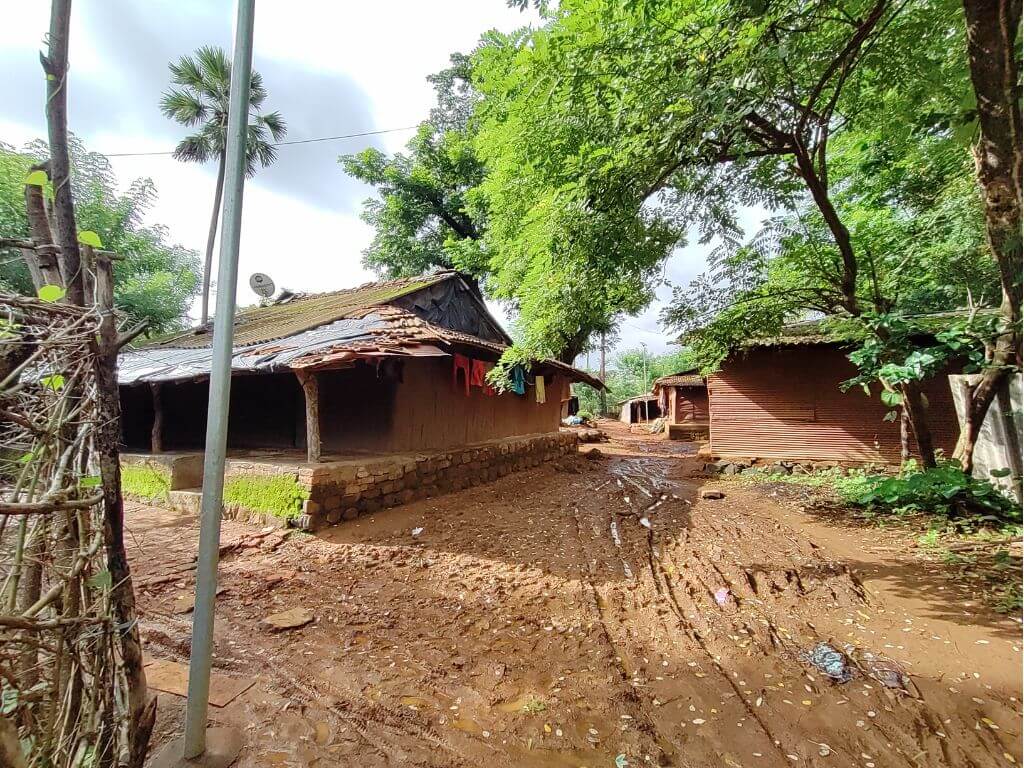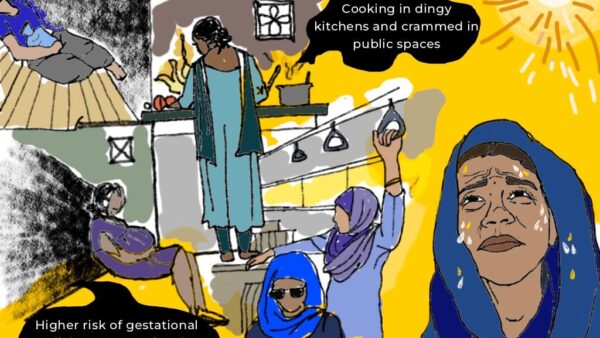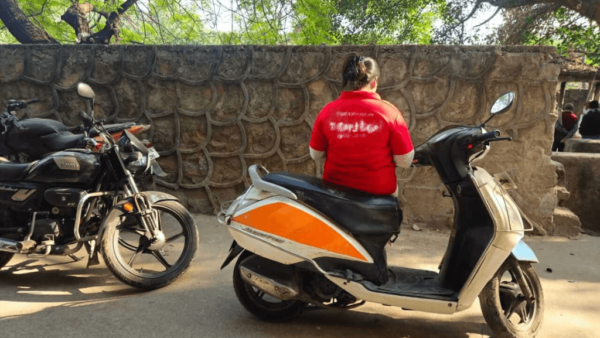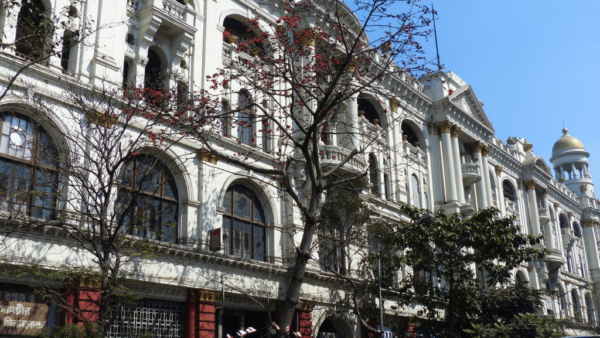Scattered across the vast green expanse of the Sanjay Gandhi National Park in Mumbai, the only such protected natural precinct in one of the world’s most dense cities, are hamlets in which indigenous Warli tribes live. The way of life of the Warlis and the fast-paced commerce-oriented urban life are a curious mix, one influencing the other. The National Park is home to at least 12 padas or hamlets of the tribal community, and the nearby Aarey Colony to 27[1], making it the highest concentration of an ancient tribe nestled in a metropolis in the world. Life in a Warli hamlet inside the National Park is at once stuck in another era and reflecting the modern urban, seen in the daily living and work of the Warli women here. They cook and clean as women are wont to, they teach and learn, they change and yet there are unchanging rhythms of their lives within the protected forest area.
The National Park, a natural ecological abundance, was valued and mined for its ability to supply potable drinking water to the fast-expanding metropolis in the 19th century that the British had turned Bombay into. The Tulsi and Vihar lakes inside this forested area continue to partially meet the city’s water needs even today. In 1942, before India was independent of colonial rule, the Bombay Municipal Corporation acquired the catchment areas of the two lakes, and the adjacent Aarey Colony, and eventually turned the forest into a protected natural area in 1950 calling it the Krishnagiri National Park. In the subsequent decades, its boundaries were expanded and it was renamed as the Sanjay Gandhi National Park covering 103.84 square kilometres[2].
The National Park is home to 274 species of birds, 35 species of mammals, 170 species of butterflies, and more than 1,300 species of trees, according to the Park’s website. It also has unique and ancient cave formations, writing and visual representation that can be traced back to Emperor Ashoka’s reign in India and the spread of Buddhism. The Warlis, found across northern Maharashtra, Gujarat, and Dadra & Nagar Haveli, have been part of the natural forest since ages too, but by virtue of the fact that the city expanded literally to the doorstep of the National Park – and threatens to intrude into the protected area – they have been exposed to urban influences. The Warli sustained themselves by cultivating land and herding cattle in the forest, as their ancestors did, but that the land belongs to the forest department since the National Park was designated as such has complicated the issue.
The Warlis crossed swords with the forest department to retain control over their land, acquire legality for their homes in line with the parameters set for the city, and access urban amenities such as electricity and water connections. The older feisty Warli women often led these struggles for rights. Most of the older women could not access formal education but they have tried to ensure that the younger generation does. The average age of marriage of Warli girls has increased too and young Warli women now hold jobs outside the National Park while still living in the old hamlets within it. In discussions about the National Park and its ecological riches, the Warli women are rarely heard. Question of Cities takes you to their hamlets and into their lives.

Along the Dahisar river is the Navapada hamlet, at a 10-minute walk inside the National Park as one heads off the busy Western Express Highway. T-shirts on men (left) and a motorcycle dot the rural landscape. The blue tarpaulin sheets to protect homes from the hard rain during the monsoon, a recognisable symbol of Mumbai’s informal housing, can be seen here too. Like Navapada, you will find Chinchpada, Keltipada and Rajnipada, all hamlets of Warlis, which do not have potable water, among other amenities, despite the fact that a municipal water supply line was laid for the forest quarters near the Navapada hamlet. The Warlis, say the women, are forced to drink water from other sources including wells and borewells, which often make them ill during the monsoon.

There are cemented or tarred roads inside the National Park for tourists and officials. Sundays and holidays see large crowds throng the National Park for a spot of fresh air and the soothing green away from Mumbai’s bustle and noise. That’s when women like Savita Hari Mohovare, 20, set up stalls to sell seasonal fruits, boiled groundnuts and chana, corn among other healthy finger foods. A resident of Rajnipada, she has her family bring cooked or boiled food in batches from their home to the stall because the National Park rules do not permit a stove at the stall. Mohovare doesn’t venture out of the park’s boundary often but she is connected to the urban through the city-dwellers and trekkers who come on Sundays or holidays, and through the QR code-enabled payment card seen here in the midst of her wares.

Shamu Barap, in her 50s, has lived in Navapada since she was married at the age of 12. “My ancestors have been living here before it was declared a National Park. Initially, I was scared of the forest authorities who call our homes jhopadpatti (slums). With time, I understood that this land is my right and I have to fight for it. I will die while fighting for my rights but I will never stop fighting. I taught my children that too. An adivasi cannot live without the forest and a forest cannot grow without an adivasi. These officers change every three years, they don’t know who we are. Now, I tell them to find out who we are before calling our houses jhopadpatti,” says Shamu.

Navapada has a balwadi for children, thanks to Shamu Barap. “When we struggled for food, people would send their children to beg from visitors coming to the National Park. An organisation approached me to cook for a school that they wanted to set up…The teacher and I would bathe and feed the children. After a while, men from my village thrashed me and my husband, and my clothes tore. They did not like that their kids were schooling. When we lodged a police complaint, it scared them,” she says. Things changed for the better when her eldest son completed college and her people understood the importance of education. Shamu has also encouraged women to register at nearby hospitals in the city rather than birth children at home without medical facilities. She intervenes whenever there are problems in her community.

The balwadi, or Anganwadi, is now a fixture in the Warli community. Shamu’s eldest daughter-in-law Sonal Barap, 37, who grew up in Virar outside the forest area, has been working as an Anganwadi teacher for the past 15 years. She starts her day here at 10am, welcomes 50 to 55 children between two and six years old from Navapada, Chinchpada, Rajnipada and Keltipada for the day, teaches them basic preschool things before letting them return home between 12.30 and 1.00pm. Before they leave, she makes sure that a fresh meal is made on the premises and the children have it – part of the official Integrated Child Development Services (ICDS) — to ensure a nourishing mid-day meal for little children. Many school-going children too come to her Anaganwadi to have their lunch boxes filled before heading to their formal school, Abhinav Vidya Mandir, situated about 2 kilometres from Navapada. Sonal also visits homes in the hamlets before her day ends: “I go to check on new mothers and pregnant women. All this takes time. My work at the Anganwadi ends at 3.30pm.”

Like most women in the National Park, Sonal Barap learnt how to sew clothes, bags, and more recently, masks to keep the pandemic at bay. She was only 22 years old when she married and moved to the National Park when life here was new to her. However, she soon adjusted to the peculiar demands of living in the middle of a forest, such as sharing space with animals. She, like other women here, does not consider animals as “encroachers” in her space because she believes that they all have equal rights over this place. Sonal says, “We believe that the animals are as much ours as the forest itself is. When I had just moved in, my mother-in-law told me that she had spotted a leopard in the washing area of my house. I used to be scared but I’ve got used to it. I like living in the forest.”

Warli women in their 50s and above prefer to wear traditional attire, mostly sarees, no matter what activity they are engaged in. Mangli Barap, in her late 70s, says, “I wear a six-yard saree when I have to work inside the village. I change into a nine-yard saree when I have to go out.” Their daughters and daughters-in-law move comfortably between nighties, T-shirts, salwar-kameez and sarees too, depending on the nature of the work they do. They prefer the more free-flowing nighties and loose T-shirts at home but can be spotted wearing the ubiquitous salwar-kameez and sarees when they step out for work, education and recreation.

Women who work inside the periphery of the park don’t have to go out often. The forest does not provide them with sufficient food from agriculture anymore except the monsoon months when they grow vegetables such as cucumbers, bitter gourds and bottle gourds. The Warlis grew their own grains like rice but after their farm lands were included in the forest area, they have been forced to buy grains from outside. While the women between 20s and 50s go out to work as domestic helpers, sweepers and sanitation workers, the younger women go out for education in the suburbs around the National Park. They walk to and from their hamlets to the Park gate after which they either walk, or take buses or trains depending on the distance they have to cover. This reflects in the way they dress too. Sonal (right), in her late 30s, wears a nightie as she finishes household chores, and will change into a salwar kameez before heading out while Mangli is wearing a saree in the traditional drape.

Sharda Babu Gawit, 38, holds a job with the Western Railway at Borivali station, situated 1.2 kilometres from the gate of the National Park, where she sweeps the station and works on the upkeep of the tracks. She landed this job through her aunt who also works as a sanitation worker at the station. She leaves the forest at 1.00pm and returns at 10.30pm every day. She sometimes has the company of a woman from Rajnipada. They walk most of the road home together before heading to their respective hamlets. Gawit explains, “Since it’s dark by the time we head home, we have an understanding with a rickshaw driver who lives in a hamlet nearby. He drops us till our hamlets after which we walk to our homes. But this doesn’t happen every day. Our fear of being attacked by animals is less in comparison to our need to earn and fill our stomachs.” During the fishing season, Gawit also sells fish in Navapada for which she goes to the fish market at Malad at 6.00am before starting her formal job.

“I am one of the most popular people around here. I am also one of the oldest,” says Mangli Vijay Barap. She was born in Navapada. She started staying at home when the tribe’s farming activities were restricted. The lack of a legitimate and reliable source of electricity has forced the Warlis here to resort to using electricity from the forest department quarters. Mangli says, “We are supposed to pay the full bill for their share of the usage too. We are ready to pay our electricity bills by selling vegetables but they don’t want to give us an electricity line…We have solar panels but of what use are those? We don’t get enough sunlight here.” The hamlet also lacks a gas pipeline. Mangli’s house has a gas cylinder which they use on rare occasions because of its high cost. They collect and use firewood from the forest instead to make the cylinder last them for two to three months. “People of my age outside the park receive pension but we get nothing. We are not even allowed to practise the only thing we know –- farming. So how should we survive? They ask us to meet officers for every single problem. How many times do we meet them? They think we have a lot of resources but they should see how we live,” she contends.

Komal Barap, 16, is a junior college student of Arts at SB Vartak College in Borivali. She is also a budding Warli artist of Navapada. She has been training in the art of Warli painting under her uncle Dinesh Barap, 28, who is the hamlet’s only Warli artist. On her prowess in Warli art, she says, “Anyone can do this art but, in my view, a Warli painting is one that tells a story of our people. I believe that very few people can do that.” Komal wants to obtain an Arts degree but her aspiration is to acquire qualifications in fashion designing. Beyond all that, she would like to make Warli paintings for the rest of her life. “Dancing, sports, stitching, designing – these can be considered my hobbies but art, art is life,” she says. She stitches bags at Gandhi Tekdi nearby when she has free time and earns Rs 100 per bag which she uses to buy her art supplies.

Komal (left) is seen getting ready to go to college. Her mother braids her hair every day and she is comfortable in trousers and T-shirts. Her paintings adorn her house though her family does not think much of her dabbling in art. “My family questions my interest in Warli art, but I don’t pay attention to that. I tune everything out when I sit down with my painting.”
The women of the Warli tribe manage to balance the old and the new while supporting each other to lead better lives. Their connection to their roots lies in their effort to stay on in the forest, their home despite the challenges. The insecurity about their homes and livelihoods, coming from the intrusion of the state into their lives, resulted in the Warlis finding different ways to stay on and fight for what’s theirs by right. The Warlis’ existence in the National Park is a daily struggle to live negotiating the outside world and retaining their way of life. The Maharashtra government, earlier this year, proposed a Rs 400-crore project to turn the National Park into a tourist attraction with an enhanced wildlife safari, amphitheatre, tribal museum, virtual zoo and eco-infotainment facilities with viewing decks, boating facilities and a library. Every such project puts a question mark on the way the Warli women live.
Jashvitha Dhagey developed a deep interest in the way cities function, watching Mumbai at work. She holds a post-graduate diploma in Social Communications Media from Sophia Polytechnic. She loves to watch and chronicle the multiple interactions between people, between people and power, and society and media.
Dnyaneshwari Burghate, a post-graduate in Women’s Studies with additional qualifications in media, is a researcher, photographer, and story-teller. She documents stories at the intersection of gender, media and society.
Photos: Dnyaneshwari Burghate





There is 1 comment
Yet another insightful piece of writing in Question of Cities. Such a moving, human story of the Warlis struggle to survive in their own traditional habitat as urbanisation rampages on. Totally amazed by the diverse issues in every edition, united by your concern for all that’s going wrong in our cities. Also the clean, eminently readable design and the impeccable edit. I sincerely hope your voices are increasingly heard and your clarity and commitment remains unwavering and inspiring.